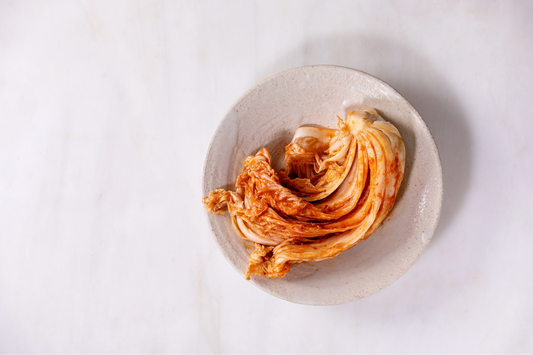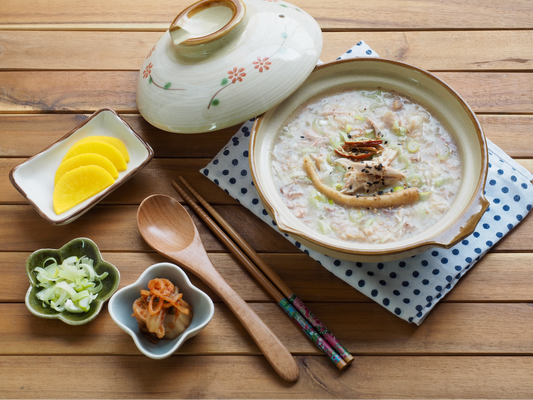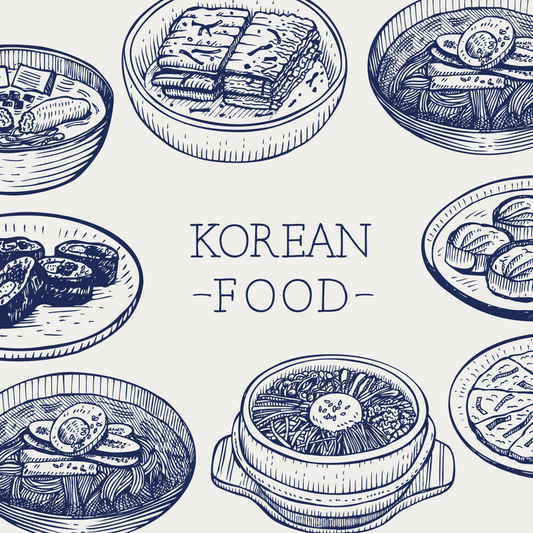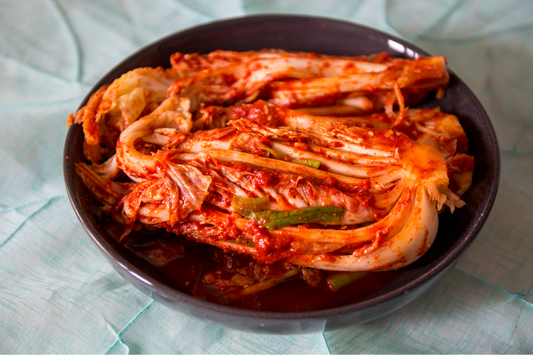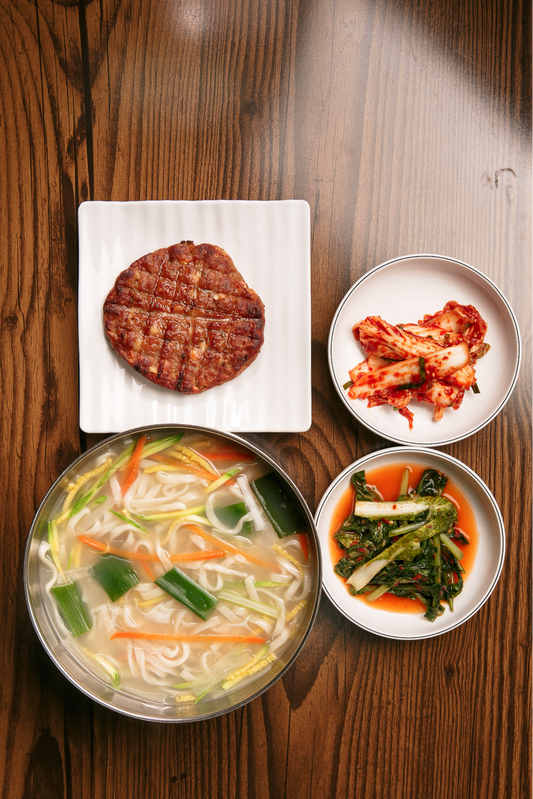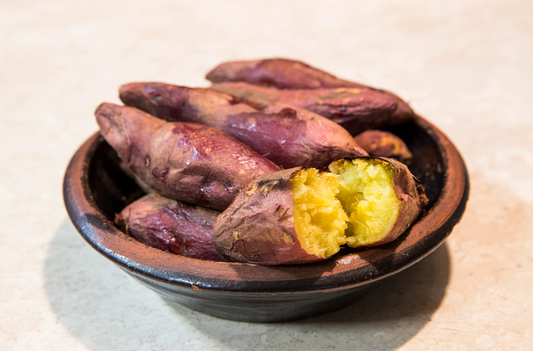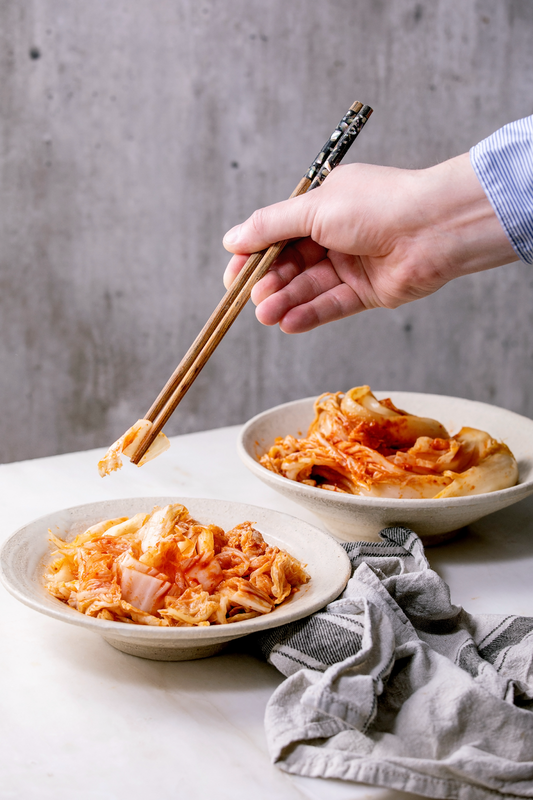Are you looking for a new side dish? Have you tried musaengchae, the crunchy and spicy Korean radish salad? It's perfect for any meal and has become very popular. A viral recipe video has been watched over 649,913 times on YouTube and has 8,200 likes.
Musaengchae is a non-kimchi saengchae that highlights the natural sweetness and crunch of Korean radish. It's easy to make with just a few ingredients. You'll need firm radish matchsticks, kosher salt, vinegar, Korean hot pepper flakes, sugar, garlic, green onion, and sesame seeds. It's a vibrant and addictive side dish that goes great with bibimbap, bossam, or any Korean BBQ feast.
Musaengchae is not only delicious but also healthy. Korean radish, the main ingredient, is full of dietary fiber, vitamins, and minerals. It aids digestion, boosts immunity, and helps keep your gut healthy. Plus, it's low in calories and high in water, making it a guilt-free addition to any meal.
In this article, we'll explore musaengchae's cultural background, unique features, and a foolproof recipe. You'll learn how to make this simple yet stunning Korean radish salad. Get ready to impress your family and friends with this easy side dish!
Key Takeaways:
- Musaengchae is a quick and easy Korean radish salad that can be made in just 10-15 minutes.
- The salad showcases the natural sweetness and crunchiness of Korean radish, also known as mu or daikon.
- Key ingredients include radish matchsticks, kosher salt, vinegar, Korean hot pepper flakes, sugar, garlic, green onion, and sesame seeds.
- Musaengchae offers numerous health benefits, such as aiding digestion, boosting immunity, and maintaining a healthy gut.
- This versatile side dish pairs well with bibimbap, bossam, Korean BBQ, and other protein-rich meals.
Definition of Musaengchae Kimchi
Musaengchae, also known as seasoned radish salad, is a refreshing Korean side dish. It's a great alternative to traditional fermented kimchi. This salad is known for its unique flavors and textures.

Basic explanation of musaengchae kimchi
Musaengchae is a simple yet flavorful dish. It's made with thinly sliced Korean radish, seasoned with gochugaru, garlic, vinegar, and other ingredients. This results in a crisp and tangy salad, perfect as a side dish or on its own.
The difference between musaengchae kimchi and other types of kimchi
Musaengchae is served fresh, unlike most kimchi which is fermented. This quick method highlights the radish's natural sweetness and crunch. It's a great choice when you're short on time or want a lighter taste. While it may not have the same depth as fermented kimchi, musaengchae has its own charm and health benefits.
Cultural background and unique features of musaengchae in Korea
In Korean cuisine, musaengchae is often served with bossam, a meal featuring boiled pork belly. The salad's bright flavors complement the rich pork perfectly. It's also a key ingredient in bibimbap, a colorful rice dish with various vegetables, meats, and a fried egg.
Musaengchae is prized for its health benefits. Korean radish aids digestion with its high fiber and enzymes. The gochugaru gives the salad a vibrant red color, showing its high antioxidant content. This contributes to overall well-being.
Ingredients and Benefits
Musaengchae is a refreshing salad from Korea. It's made with Korean radish, known for its health benefits. This salad is easy to make with radish and other tasty ingredients.
Health Benefits of Korean Radish
Korean radish, or mu, is low in calories but rich in nutrients. It's full of vitamin C, folate, and potassium. These nutrients help your body in many ways.
Eating Korean radish can help your digestion. It promotes good gut bacteria and reduces inflammation. Radish also has a lot of fiber, which helps with bowel movements and prevents constipation.
The antioxidants in radish, like glucosinolates and isothiocyanates, fight cancer and improve heart health. They neutralize harmful free radicals and reduce inflammation. Radish also helps flush out toxins and excess fluids, supporting kidney and liver health.
Benefits of Other Ingredients in Musaengchae
Musaengchae also includes garlic, ginger, and hot pepper flakes. Garlic boosts your immune system with its allicin. It fights off colds and flu.
Ginger is another key ingredient, used for centuries in medicine. It has anti-inflammatory and antioxidant properties. Ginger helps with digestion, reduces nausea, and boosts metabolism. It also relieves pain, which is good for arthritis and menstrual cramps.
Hot pepper flakes add spice and health benefits. Capsaicin in chili peppers boosts metabolism and burns fat. It also regulates blood sugar and improves circulation. Capsaicin can help with chronic pain.
Musaengchae is a healthy salad that's good for you. It's spicy, sweet, and crunchy. Adding it to your diet can improve your health and add flavor to your meals.

Recipe
Making musaengchae is easy and quick. It's a tasty Korean radish salad. You just need a few ingredients and some basic steps to make it. Here's what you need and how to do it.
Ingredients
The ingredients for musaengchae are simple and common. You'll need:
- 1 pound Korean radish
- 1-2 tsp salt
- 1-2 chopped scallions
- 2 tbsp gochugaru (Korean red pepper flakes)
- 2 tsp minced garlic
- 1/2 tsp grated ginger
- 1 tbsp fish sauce or salted shrimp
- 1 tsp sugar
- 1 tsp sesame seeds
Cooking Process
To start, peel the Korean radish and cut it into thin matchsticks. Put the radish in a bowl and sprinkle with 1-2 tsp of salt. Let it sit for about 20 minutes to draw out water.
After 20 minutes, drain the liquid. Then, add gochugaru, garlic, ginger, fish sauce (or salted shrimp), and sugar to the bowl. Mix well to spread the seasonings evenly. Finally, add scallions and sesame seeds and toss again.
Storage Method
If you have leftover musaengchae, store it properly to keep it fresh. Put it in an airtight container and refrigerate. It lasts up to one week. Remember, the radish may get wetter, so drain excess liquid before serving.
Musaengchae is great on its own or as a side dish. Its crunchy texture and spicy flavor are perfect for any Korean meal.

Tips and Cooking Methods
Musaengchae is a versatile dish that can be added to many Korean meals. It's a refreshing and healthy choice instead of traditional kimchi. This simple kimchi alternative pairs well with many dishes, adding flavor without the intense spiciness of kimchi.
It's a favorite side dish for Korean barbecue or bossam, a Korean pork dish. The crisp texture and mild flavor of the radish salad contrast nicely with the rich, savory meats. Musaengchae also enhances the taste and nutritional value of bibimbap or kimbap, two classic Korean dishes.
Customizing Your Musaengchae
If you prefer a non-spicy version, use fish sauce for a savory flavor. Rice vinegar can add a touch of sourness instead of hot pepper flakes. Adjust the seasoning to your liking. While best fresh, leftovers can be stored in the fridge for up to a week, making it easy to add to your meal prep.
Pairing Suggestions
Musaengchae isn't just for Korean dishes. It pairs well with grilled meats, rice dishes, or as a refreshing appetizer. Its light, crisp texture and subtle flavors make it a great side dish for a variety of meals. It lets you try new combinations and enjoy healthy, delicious meals.
FAQ
What is musaengchae?
Musaengchae is a simple Korean radish salad. It's seasoned with salt, vinegar, and hot pepper flakes. You also need garlic, green onion, and sesame seeds. It's a fresh, raw vegetable dish from Korea.
How is musaengchae different from other types of kimchi?
Unlike fermented kimchi, musaengchae tastes like fresh kimchi. It's ready to eat right after you make it. It's a quick, fresh alternative to kimchi.
What are the health benefits of eating musaengchae?
Korean radish in musaengchae helps with digestion and health. Garlic, ginger, and hot pepper flakes boost immunity and metabolism. Eating musaengchae regularly is good for you.
What ingredients do I need to make musaengchae?
You need Korean radish, salt, and chopped scallions. Also, gochugaru, garlic, and ginger. Don't forget fish sauce, sugar, and sesame seeds.
How do I store leftover musaengchae?
Store leftover musaengchae in an airtight container in the fridge. It lasts up to a week. Just remember, it might get a bit watery.
What dishes can I serve with musaengchae?
Musaengchae goes well with many dishes. Try it in bibimbap, kimbap, or with Korean BBQ and bossam. It's also great as a refreshing appetizer or side with grilled meats and rice.



